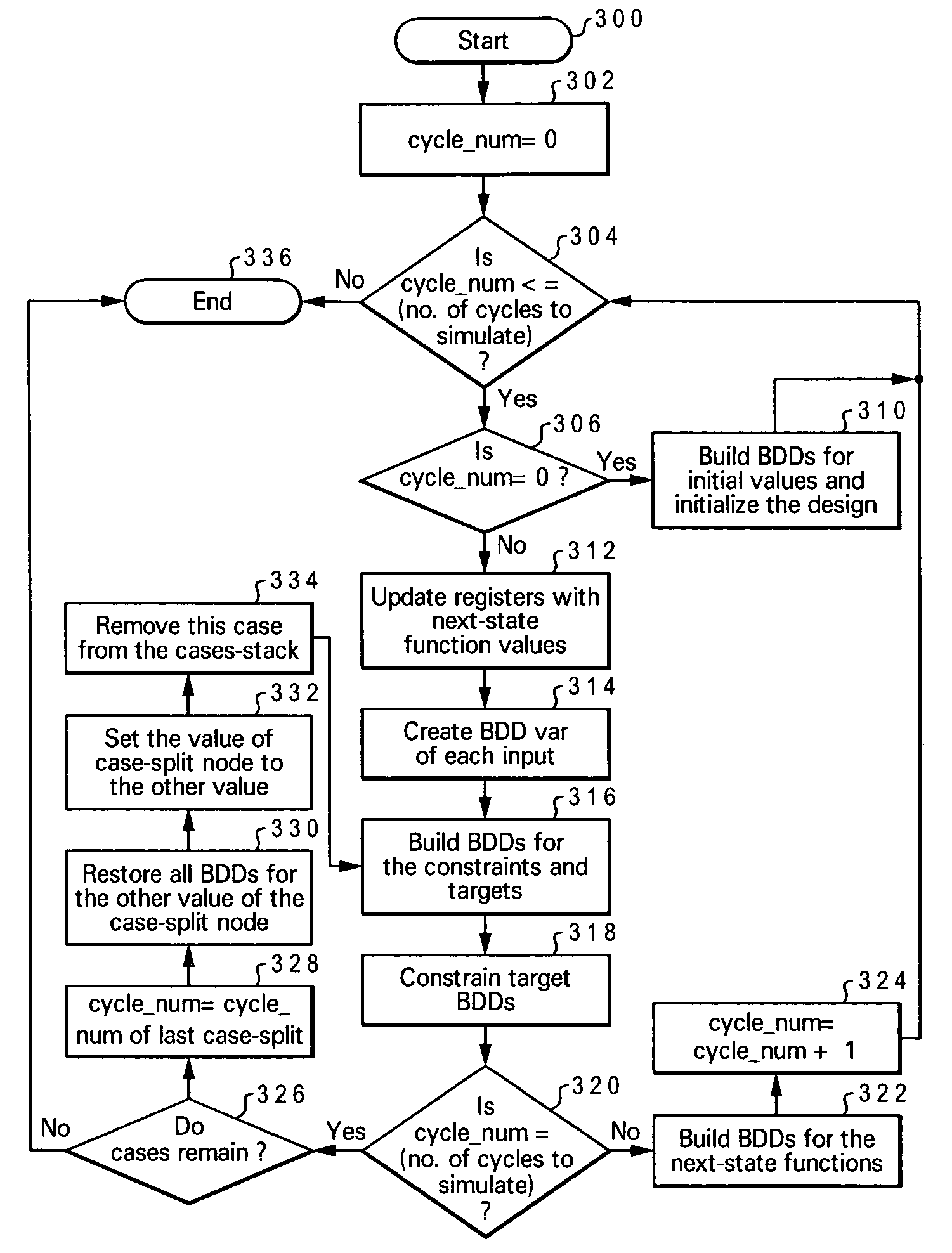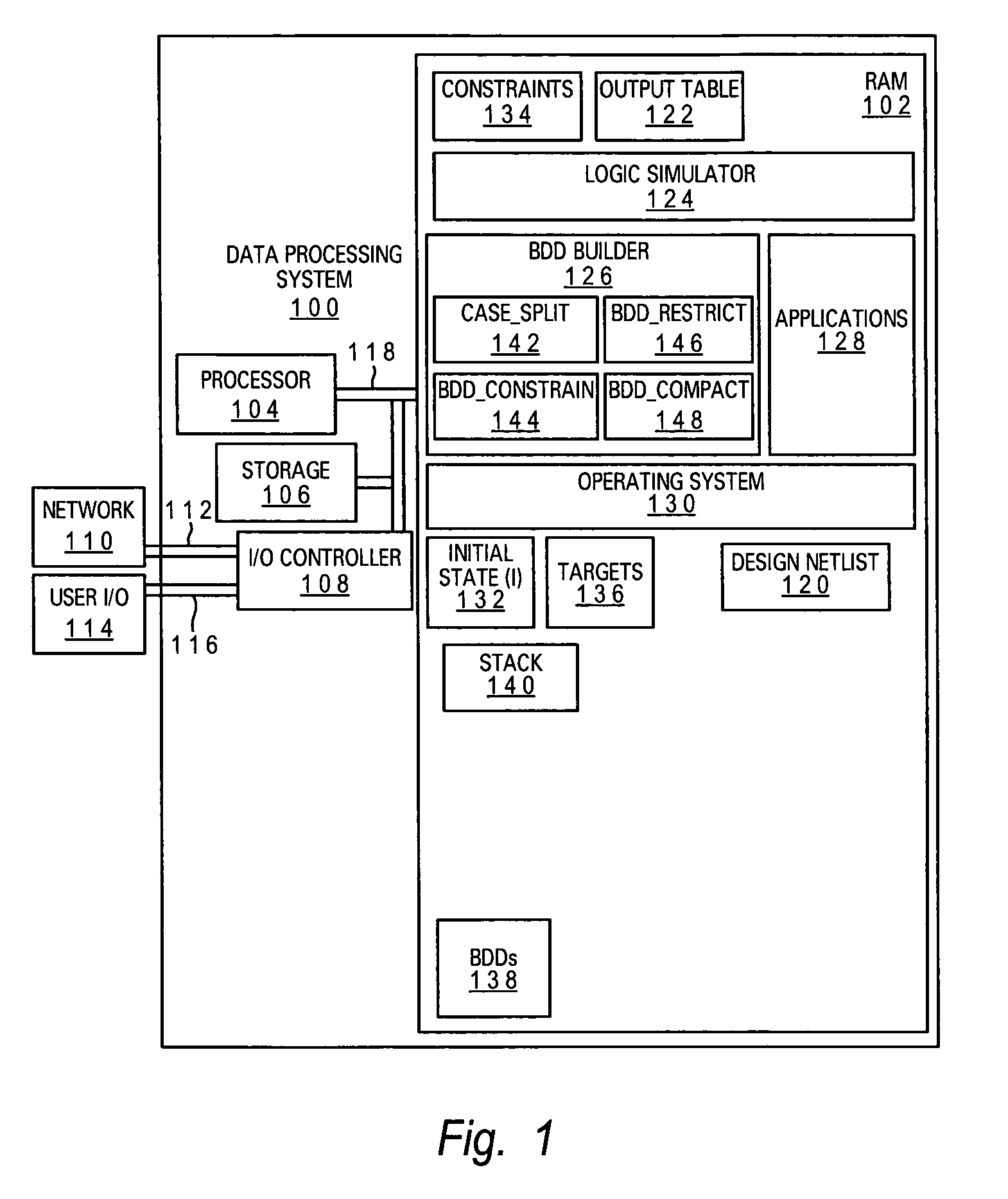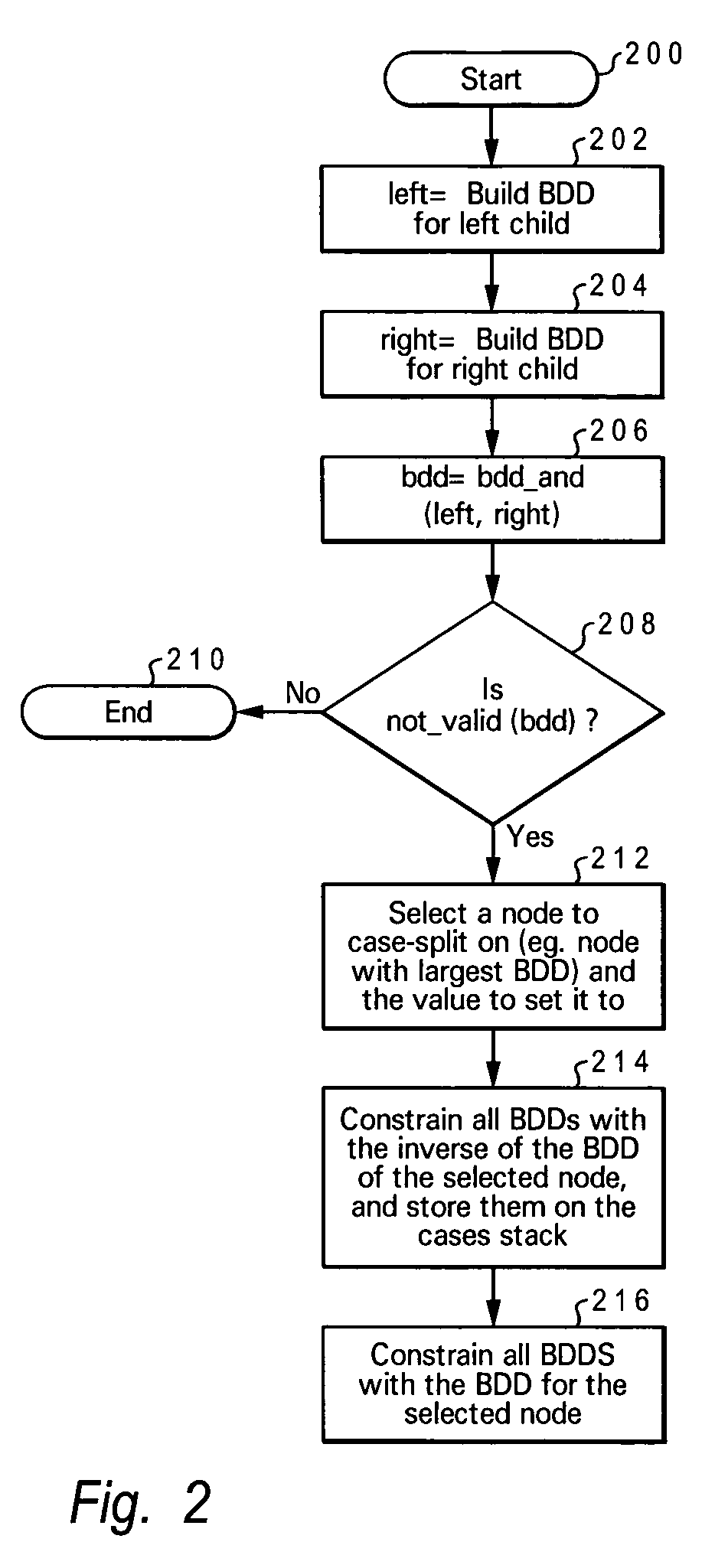Method and system for optimized automated case-splitting via constraints in a symbolic simulation framework
a symbolic simulation framework and automation case technology, applied in the field of verification of logic functions in decision diagrams, system and computer program products, can solve problems such as functional design failure, formal verification and many formal analysis techniques that require exponential computing resources with resp
- Summary
- Abstract
- Description
- Claims
- Application Information
AI Technical Summary
Benefits of technology
Problems solved by technology
Method used
Image
Examples
Embodiment Construction
[0019]The present invention provides a method, system, and computer program product to optimize case-splitting and ameliorate the explosion in BDD representations when simulating a design symbolically. The method of the present invention ensures that the sizes of intermediate BDDs do not exceed a specified size limit, ultimately improving the likelihood that the symbolic simulation completes on a design for which it otherwise may not have previously completed under the prior art due to resources (e.g. available memory on the machine) exhaustion. The method of the present invention employs a strategy and heuristic for automated case-splitting, and the overall case-splitting approach improves the likelihood completeness—e.g., the analysis of all cases, as if no case splitting had been performed. The method of the present invention enables significant performance improvements over that possible in the prior art, offering the hope of completing symbolic simulation when prior-art solutio...
PUM
 Login to View More
Login to View More Abstract
Description
Claims
Application Information
 Login to View More
Login to View More - R&D
- Intellectual Property
- Life Sciences
- Materials
- Tech Scout
- Unparalleled Data Quality
- Higher Quality Content
- 60% Fewer Hallucinations
Browse by: Latest US Patents, China's latest patents, Technical Efficacy Thesaurus, Application Domain, Technology Topic, Popular Technical Reports.
© 2025 PatSnap. All rights reserved.Legal|Privacy policy|Modern Slavery Act Transparency Statement|Sitemap|About US| Contact US: help@patsnap.com



